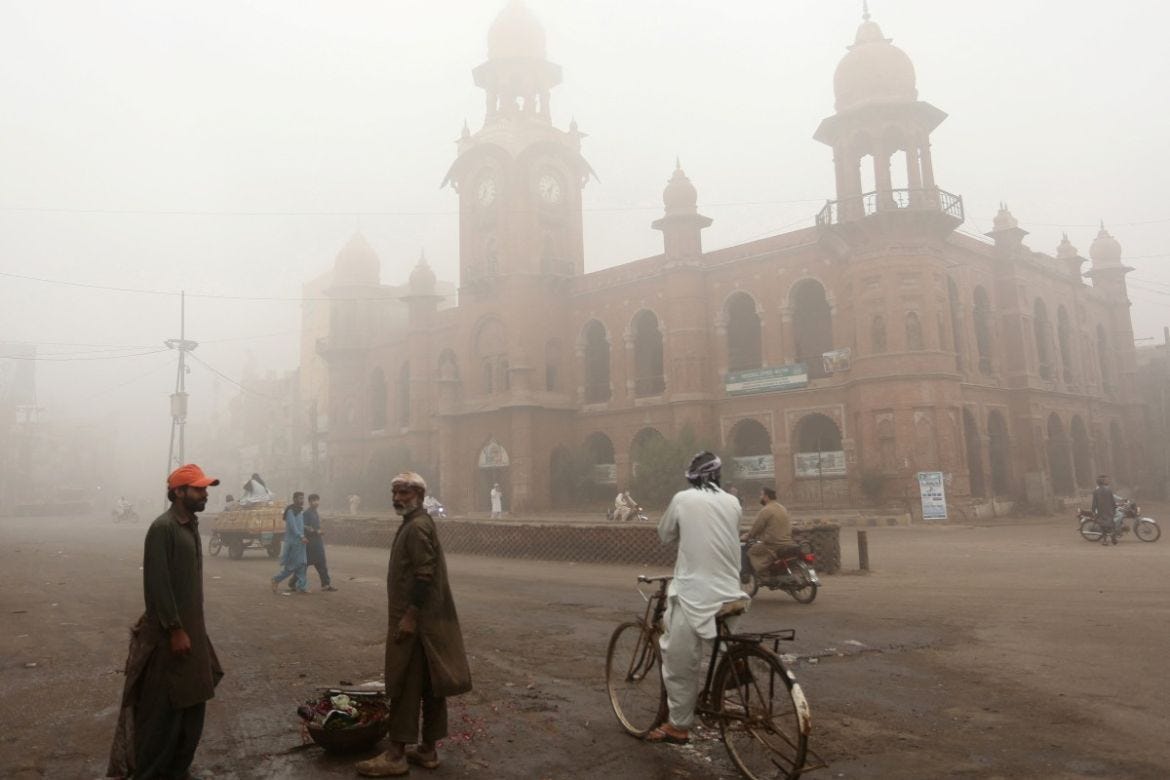Record Levels of Pollution in Pakistan
Millions of Lives in Pakistan Endangered by Toxic Smog and Rising Pollution

A thick layer of toxic smog has covered the atmosphere of Pakistan’s Punjab province for the last two weeks, making its air hazardous for millions of people in cities such as Lahore and Multan.
Lahore, the capital of Punjab and the second largest city of Pakistan has emerged as the world’s most polluted city with its AQI hitting above 1,000 for several days this week. The AQI on Wednesday was recorded at 815. Other cities in the Punjab province, such as Multan, Bahawalpur and Faisalabad too recorded an average AQI above 400 in the same period.
An AQI above 300 is considered hazardous for human living.
The high level of pollutants (PM 2.5) in the air has forced the Pakistani authorities to shut down schools and colleges until 17 November and public parks until 18 November. It has also issued orders to shut the shops and commercial activities early asking citizens to minimize venturing out and to wear masks.
The number of people reporting respiratory issues have reached nearly 70,000 daily in the province according to the Associated Press.
Prolonged exposure to smog leads to a large number of health problems such as irritation in the eyes, respiratory issues among others. Every year millions of people die due to air pollution.
According to the World Health Organization (WHO) “fine particles matter (PM 2.5) can penetrate [the human body] through the lungs” and blood streams causing major damages to human organs and can cause lung cancer, asthma, stroke and other diseases. Such exposure among children can affect their growth both physically and psychologically and can have lifelong effects.
Smog has become a regular feature in Pakistan’s Punjab province in recent years due to rising pollution caused by the high number of vehicles, increasing urbanization with a high density population, and an increase in polluting industries and agricultural activities.
According to Marriyum Aurangzeb, a senior minister in the Punjab government, Lahore endured 275 days of unhealthy AQI levels over the past one year with average temperature rising by 2.3 degree celsius.
Failure of the state
Punjab is Pakistan’s largest province with over 117 million people. The government led by Mariyum Nawaz of Pakistan Muslim League (PML) has been accused of taking inadequate measures to control the situation. In the name of fighting against polluters it has only targeted farmers and brick kilns and has been reluctant to hold larger and more powerful polluters such as big industries and the transport sector, Dawn reported.
According to the Punjab government’s own study, unfit vehicles apparently are the primary polluters (around 43%) in the province but the government has failed to curb their movement.
Ammar Ali Jan, head of the Haqooq-e-Khalq Party (HKP) has been consistently raising the issue of smog which makes the atmosphere “unfit for human survival.” Noting that in this inhuman condition only the rich who can afford to buy air purifiers can survive terming the government’s inactivity to provide relief to the people as a “criminal and insane” policy of “privatization of clean air.”
High pollution disrupts normal life for all sections of the population. However, it disproportionately affects the working class population as they are unable to follow the protection measures such as staying at home and wearing masks given the nature of their livelihoods.
In a recent tweet he also said that “climate catastrophe in Punjab is a result of a development model that turned our cities into concrete jungles.” He accused the Maryum Nawaz government for remaining “hopelessly non serious about confronting the challenge” and instead favoring big polluters such as “land mafia,” and “car/oil companies” in the state.
In light of the government’s lack of response, various left and progressive student organizations in the country called for a protest in front of the Punjab provincial assembly on Thursday 14 November. They demanded urgent action to fight climate change and the smog problem in the country.



